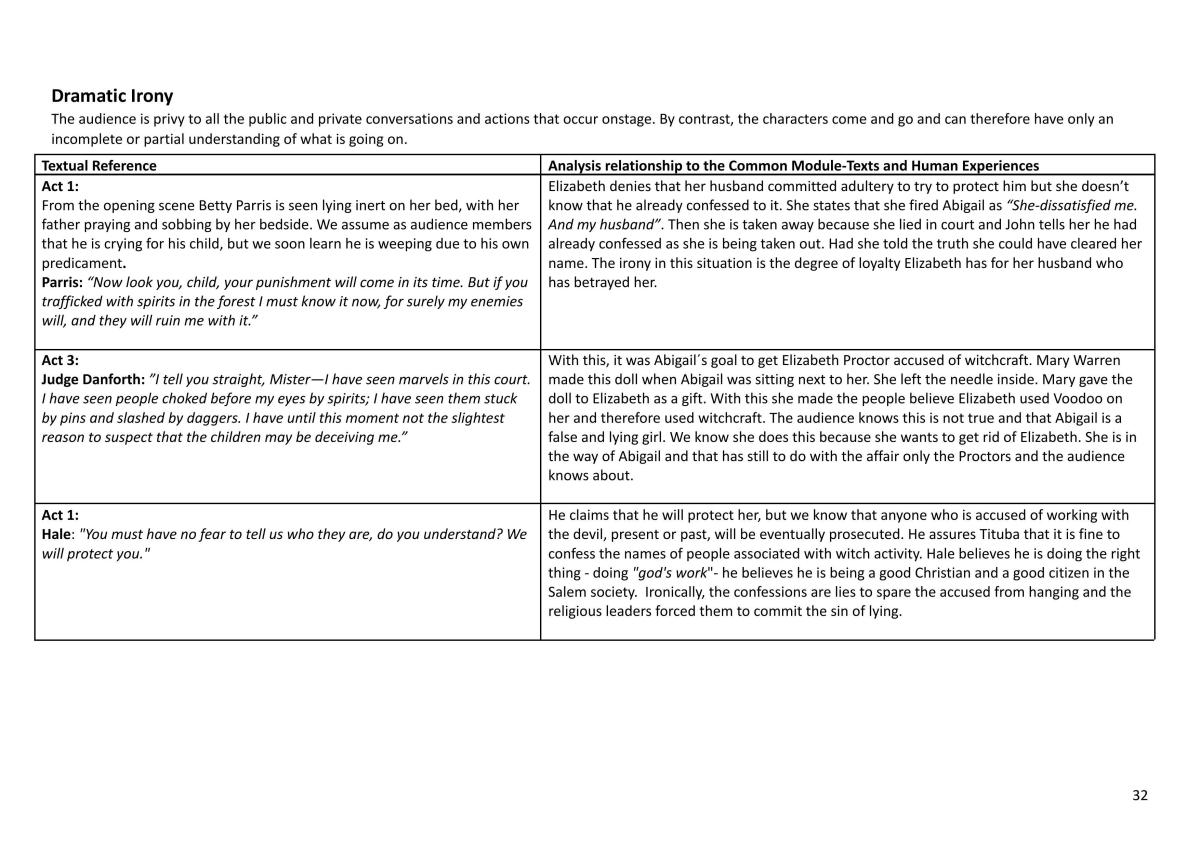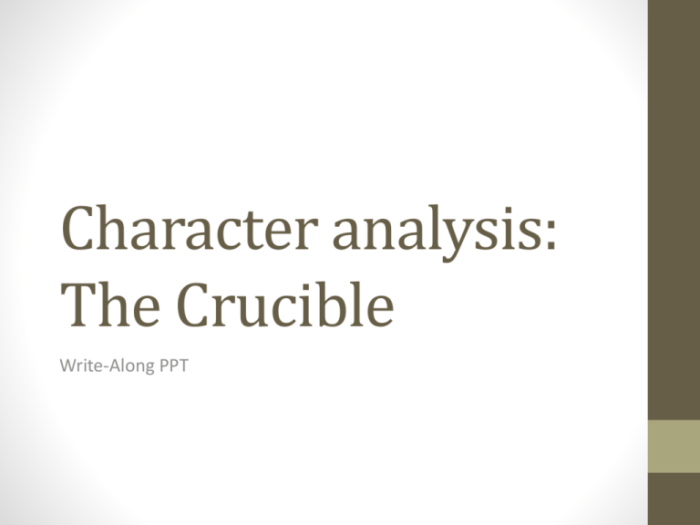Analyzing characterization and motivation in the crucible – In Arthur Miller’s gripping drama “The Crucible,” characterization and motivation intertwine to create a powerful and thought-provoking exploration of human nature. This analysis delves into the intricate motivations that drive the characters’ actions and decisions, shedding light on the complexities of their personalities and the profound impact they have on the play’s narrative.
Through meticulous character analysis, we uncover the inner workings of the individuals at the heart of “The Crucible,” examining their desires, fears, and the external forces that shape their choices. By unraveling the motivations behind their actions, we gain a deeper understanding of the play’s themes, the historical context it reflects, and the timeless truths it reveals about human behavior.
Character Analysis

In Arthur Miller’s “The Crucible,” the characters are driven by a complex interplay of motivations, which shape their actions and decisions and contribute to the play’s plot.
Abigail Williams
- Jealousy and desire for John Proctor
- Fear of being exposed as a witch
- Ambition and desire for power
John Proctor
- Guilt over his affair with Abigail
- Integrity and sense of justice
- Fear of being accused of witchcraft
Reverend Parris
- Greed and ambition
- Fear of losing his position and reputation
- Desire for control and power
Deputy Governor Danforth
- Zealous belief in the witch trials
- Blind adherence to authority
- Desire to maintain order and stability
Elizabeth Proctor
- Strong and independent spirit
- Love and loyalty for John
- Fear of being accused of witchcraft
Setting and Context

The setting of “The Crucible” is Salem, Massachusetts in 1692, during the infamous witch trials.
Historical Context
- Puritan society’s strict religious beliefs and fear of the devil
- Political and social tensions within the community
- Superstition and widespread belief in witchcraft
Impact on Characters
- Creates a climate of fear and suspicion
- Leads to the persecution of innocent people
- Highlights the dangers of mass hysteria
Themes and Symbolism

“The Crucible” explores several major themes through the use of symbolism and allegory.
Themes
- Mass hysteria and the dangers of fear
- The importance of truth and justice
- The conflict between good and evil
Symbolism
- The forest as a symbol of darkness and evil
- The crucible as a symbol of purification and truth
- The black cat as a symbol of witchcraft
Dramatic Structure
“The Crucible” is structured in a way that creates suspense and tension throughout the play.
Conflict and Resolution
- The play builds to a climax where the conflict between the accused and the accusers reaches its peak
- The resolution provides a sense of closure and reveals the consequences of the witch trials
Significance of Climax and Resolution
- The climax exposes the true nature of the characters and their motivations
- The resolution emphasizes the play’s themes and the dangers of mass hysteria
Character Motivation: Analyzing Characterization And Motivation In The Crucible
The characters in “The Crucible” are driven by a complex array of motivations that change throughout the play.
Abigail Williams
- Initially motivated by jealousy and desire for John Proctor
- Later motivated by fear and a desire for power
John Proctor
- Initially motivated by guilt and a desire to protect his family
- Later motivated by a sense of justice and integrity
Reverend Parris
- Initially motivated by greed and ambition
- Later motivated by fear of losing his position
External Factors
- The social and political climate of Salem
- The widespread belief in witchcraft
- The fear of being accused
Historical Context
“The Crucible” is based on the real-life witch trials that took place in Salem, Massachusetts in 1692.
Social and Political Climate
- Puritan society’s strict religious beliefs
- Political and social tensions within the community
- Superstition and widespread belief in witchcraft
Significance of Historical Setting, Analyzing characterization and motivation in the crucible
- Provides a realistic backdrop for the play’s themes
- Highlights the dangers of mass hysteria and the importance of truth and justice
- Shows the historical roots of the play’s characters and motivations
FAQ Section
What are the key motivations of the main characters in “The Crucible”?
The main characters in “The Crucible” are driven by a complex array of motivations, including fear, ambition, revenge, and a desire for justice. Abigail Williams, for example, is motivated by her unrequited love for John Proctor and her desire to eliminate her rival, Elizabeth Proctor.
How does the setting of “The Crucible” influence the characters’ motivations?
The setting of “The Crucible” in the Puritan town of Salem during the witch trials creates a climate of fear and suspicion that intensifies the characters’ motivations. The fear of being accused of witchcraft leads to paranoia and a breakdown of trust, driving characters to make desperate choices.
What are the major themes explored in “The Crucible”?
“The Crucible” explores several major themes, including the dangers of mass hysteria, the importance of due process, and the conflict between individual conscience and societal expectations. The play also examines the destructive power of fear and the corrosive effects of guilt.